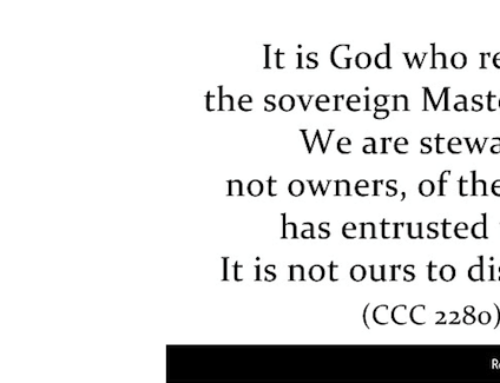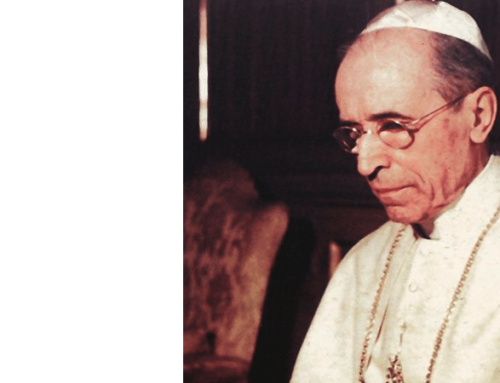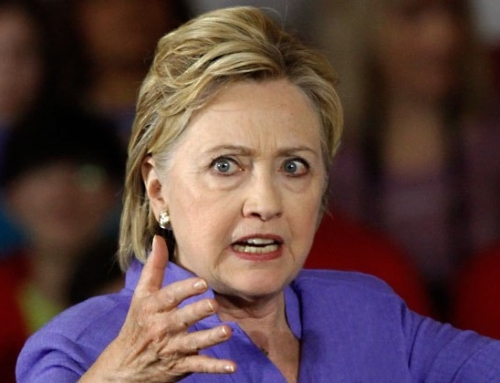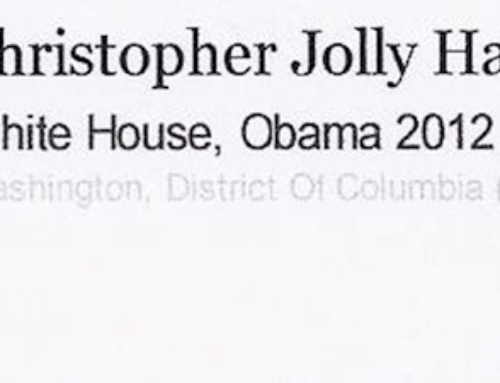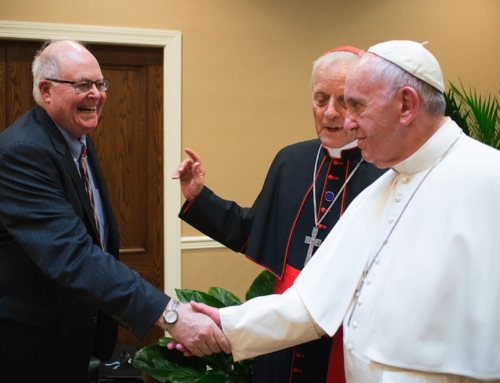by Ronald Rychlak
(Catalyst 12/2001)
A couple of years ago, when critics charged that Pope Pius XII had shown a callous indifference to the plight of the Jews, the common refrain was that if only he had been more outspoken on behalf of the Jews, like his predecessors, thousands of more lives might have been saved. The traditional view of Popes is that they defended the life and safety of Jews, even when some Catholics were not as Christian as they should have been.
Now, along comes a book by David Kertzer, The Popes against the Jews, in which he argues that far from being defenders of Jewish people, Popes of the 19th and early 20th centuries, up until (and implicitly including) Pius XII were actually anti-Semites who paved the way for the Holocaust. Nowhere in his book is he able to document any modern Pope making any explicit statement in support of anti-Semitism, but he attempts to re-write history by focusing on a handful of issues taken out of context and without a full exploration of the evidence. The result, as Rabbi David Dalin recently wrote in The Weekly Standard: “is both false and unpersuasive.”
Kertzer says he was motivated to write his book after reading the 1998 Vatican document, We Remember: A Reflection on the Shoah. That statement explained the difference between anti-Judaism, of which the Vatican admitted “Christians have also been guilty,” and the racial anti-Semitism embraced by the Nazis. This latter evil contradicts core Catholic beliefs, and the Church has always condemned it.
The difference is illustrated in Kertzer’s discussion of Pope Pius IX and Edgardo Mortara (which took place when slavery was still legal in the United States). This Jewish boy was baptized by a Catholic servant, removed from his family, and brought up by the Pope. Church rules prevented the Christian child from returning to his family (though they were allowed to visit and could have converted to have him returned). It seems very harsh today, but it was not racial anti-Semitism. There was no hatred here. Edgardo and Pius developed a father-son relationship, and the boy grew up to become a priest. Kertzer seems not to understand that such a result would have been unthinkable for an anti-Semite.
Discussing Pope Benedict XV, Kertzer overlooks the most significant, direct piece of evidence. In 1916, American Jews petitioned Benedict on behalf of Polish Jews. The response was as follows:
“The Supreme Pontiff…. as Head of the Catholic Church, which, faithful to its divine doctrines and its most glorious traditions, considers all men as brothers and teaches them to love one another, he never ceases to indicate among individuals, as well as among peoples, the observance of the principles of the natural law, and to condemn everything that violates them. This law must be observed and respected in the case of the children of Israel, as well as of all others, because it would not be comformable to justice or to religion itself to derogate from it solely on account of divergence of religious confessions.”
Kertzer fails to mention this express papal condemnation of anti-Semitism, which was published in the Jesuit Journal Civilta Cattolica — though he does seem to quote every anti-Jewish comment published by that journal.
Benedict was succeeded by Pope Pius XI who was decidedly supportive of Jews. In 1928, the Vatican under his leadership issued a statement that was cited by rescuers during the Holocaust. It said that the Church “just as it reproves all rancours in conflicts between peoples, to the maximum extent condemns hatred of the people once chosen by God, the hatred that commonly goes by the name of anti-Semitism.” In November 1931, the chief rabbi of Milan thanked the Pope for his appeals against anti-Semitism and his continuing support for Italy’s Jews.
In 1937, Pius issued the papal encyclical Mit brennender Sorge. This encyclical still stands as one of the strongest condemnations of any national regime that the Holy See has ever published. Kertzer reports that Mit brennender Sorge contains no explicit reference to anti-Semitism. His citation for this: the much discredited Hitler’s Pope by John Cornwell. It causes one to seriously question Kertzer’s qualifications as an historian.
Mit brennender Sorge strongly condemned the neo-paganism of Nazi theories. It stated in part that:
“Whoever exalts race, or the people, or the State, or a particular form of State, or the depositories of power, or any other fundamental value of the human community… whoever raises these notions above their standard value and divinizes them to an idolatrous level, distorts and perverts an order of the world planned and created by God.”
Pius went on with further condemnations of racial theories:
“None but superficial minds could stumble into concepts of a national God, of a national religion; or attempt to lock within the frontiers of a single people, within the narrow limits of a single race, God, the Creator of the universe, King and Legislator of all nations….”
No one who read this document at the time had any illusion about the gravity of these statements or their significance.
On September 6, 1938, in a statement which – though barred from the Fascist press – made its way around the world, Pius XI said:
“Mark well that in the Catholic Mass, Abraham is our Patriarch and forefather. Anti-Semitism is incompatible with the lofty thought which that fact expresses. It is a movement with which we Christians can have nothing to do. No, no, I say to you it is impossible for a Christian to take part in anti-Semitism. It is inadmissible. Through Christ and in Christ we are the spiritual progeny of Abraham. Spiritually, we are all Semites.”
This statement was made while the most powerful nation in Europe had an officially anti-Semitic government and was poised only a few hundred miles to the north of Rome. Everyone understood their significance, especially the victims. In January 1939, The National Jewish Monthly reported that “the only bright spot in Italy has been the Vatican, where fine humanitarian statements by the Pope have been issuing regularly.”
So how does Kertzer try to convert Pope Pius XI, a celebrated champion of the Jews, into an anti-Semite? In imitation of John Cornwell (a quote from whom appears on Kertzer’s cover) he has found a previously published letter, noted some uncomfortable language within it, and attempted to use it to smear the reputation of a good and holy man.
Monsignor Achille Ratti, the future Pius XI, served as papal nuncio to Poland after World War I. In one of his reports back to Rome he stated: “One of the most evil and strongest influences that is felt here, perhaps the strongest and the most evil, is that of the Jews.” To Kertzer, this brands him evermore as an anti-Semite.
In point of fact, Ratti had been sent to a largely Catholic nation with instructions to report back to Rome on any significant developments. It so happens at that time there was a significant threat of a Communist revolution. Many of the leaders of this movement were Jewish. Ratti was reporting on what he saw, but he was no anti-Semite.
Even in the early years, Ratti was known to be on good terms with the Jews. As a young priest in Milan he learned Hebrew from a local rabbi. He enjoyed warm relations with Italian Jewish leaders in the early years of his priesthood. During his tenure in Poland, amid Europe’s largest Jewish population, he saw anti-Semitic persecution. This led the future pope to denounce anti-Semitism and make it clear “that any anti-Semitic outbursts would be severely condemned by the Holy See.”
Instructed by Pope Benedict to direct the distribution of Catholic relief in postwar Poland, Ratti provided funds to impoverished Jews who had lost their homes and businesses. Whereas Kertzer asserts that Ratti only met once with Poland’s Jews, and studiously tried to avoid them, better scholars have documented that he greeted and assisted Jews all throughout his three-year stay in Poland.
Kertzer’s other attempts to smear the papacy are similarly lacking in balance. He devotes three chapters to the ancient charge that during the Passover, Jews ritually murdered Christian children, to get their blood. This “blood libel” was not an invention of the Popes, nor for that matter of Catholics, but Kertzer implies that being duped by a fabrication is as bad as inventing it, and he makes very little mention of the numerous papal condemnations of the blood libel charge. Moreover, Kertzer charges Fr. August Rohling with being one of the primary causes of anti-Semitic agitation in the Austrian empire during the 1880s, but he gives no mention of the Vatican’s rebuke of Rohling for furthering the blood libel.
Kertzer charges that there was a Vatican “campaign” to popularize the infamous, anti-Semitic Protocols of the Elders of Zion. His evidence for this is that a French priest tried to do that in the 1920s. Of course Kertzer ignores that another French priest, Fr. Pierre Charles, SJ, wrote an article in the 1930s thoroughly debunking the forgery and that Fr. Leslie Walker, S.J. devoted much of his work to exposing the Protocols as a historical fraud. In fact, according to the Boston Pilot, September 1942, “again and again the charge that there exists an organized Jewish conspiracy against Christian civilization has been proved by Catholic scholars to be an impious forgery.”
Discussing the treason trial of Alfred Dreyfus, Kertzer’s emphasizes the French Catholics who contributed to the persecution of an innocent man, but he fails to mention the Papacy’s opposition to this anti-Semitic campaign. In a book about Papalanti-Semitism, this is a rather serious oversight. What we do get about Pope Leo XIII is buried in a footnote: two years before this case developed, Leo came out strongly defending Jews and opposed to anti-Semitism.
The truth is that the papacy stands out as the one of the few protectors of Jews during the period Kertzer examines. Selective evidence and crabbed interpretations cannot change that fact. Those who want to know more about this history are advised to consult a booklet published by the American Bishops entitled: Catholics Remember the Holocaust, which contains the full text of the Vatican’s 1998 Shoah document, statements from various episcopal conferences, and Cardinal Cassidy’s clarification and response to those (like Kertzer) who misread and misinterpret this important document.


